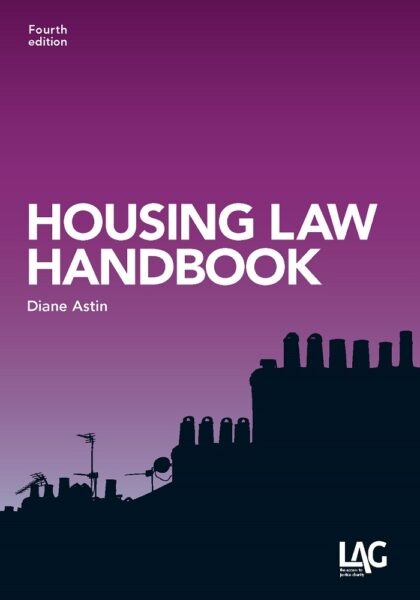Housing Law Handbook - 4th edition
A new edition of Diane Astin's 'Housing Law Handbook' has been published by Legal Action Group.

Housing law is far too complicated. This is bad for landlords, tenants and those in need of housing. But it also presents difficulties for housing advisors.
Here's where the Housing Law Handbook comes in. It provides a one-stop resource for those who need to check the law. There are 21 chapters, each of which covers a distinct area of law affecting tenants and those in housing need.
You might think that this would make for an incredibly dry text. Not at all. I mean, ok, housing law is never going to make the best seller list. But Astin, a very experienced solicitor and trainer, effortlessly explains the legal essentials.
Whether its the principles determining an occupier's legal status or the rules governing possession claims, disrepair and unlawful eviction, the main issues are explained clearly and concisely.
What I really like about the Handbook is that it has a very practical bent. The most common issues people face receive particular attention and analysis. For example, in relation to homeless applications, there are sections on challenging unlawful 'gatekeeping' by councils and how negative vulnerability decisions may be unlawful.
The text includes concise summaries of leading cases which illustrate key principles.
The Handbook also contains a variety of resources, which help you quickly find key information. For example, there are tables which summarise:
- Different types of residential tenancy.
- Rules governing the validity of notices requiring possession.
- Succession rights, according to type of tenancy.
- Tenants' rights to request reviews of decisions to seek possession.
The Handbook also includes a number of letters that lawyers and clients may need, including:
- Notice to quit from tenant.
- Homeless application letter.
- Request for review of homelessness decision and interim accommodation.
- Letter requesting information about a housing allocation decision.
- Request for a community care assessment.
- Pre-action protocol letter for a failure to assess community care needs.
There are two chapters on the housing duties potentially owed by social services. These will be particularly useful if you're a housing practitioner needing to quote the relevant law to social workers.
In addition to the subjects already mentioned above, there are also chapters on:
- Common issues for tenants.
- Relationship breakdown.
- Leaseholder's rights.
- Migrants: restriction on access to housing, and
- Civil proceedings.
All of this in just over a thousand A5-sized pages.
If you give housing advice I guess the only real decision you may want to make is whether you prefer this book or another LAG publication: Arden and Dymond's Housing Law Manual. They both have a similar brief: a single comprehensive guide to housing law.
I suspect the Manual may be preferred by housing lawyers and those who already have a good grounding in the subject. This is because if you just want to quickly check a particular legal provision, it excels. By contrast you're likely to prefer the Handbook if you want more discussion around the issues and summaries of the main cases.
The Handbook covers the law in England only, and is available as a book (£63.50 incl p&p), e-book (£60) or bundle of both (£89.30 incl. p&p).
Posted in category: Books & publications
Comments